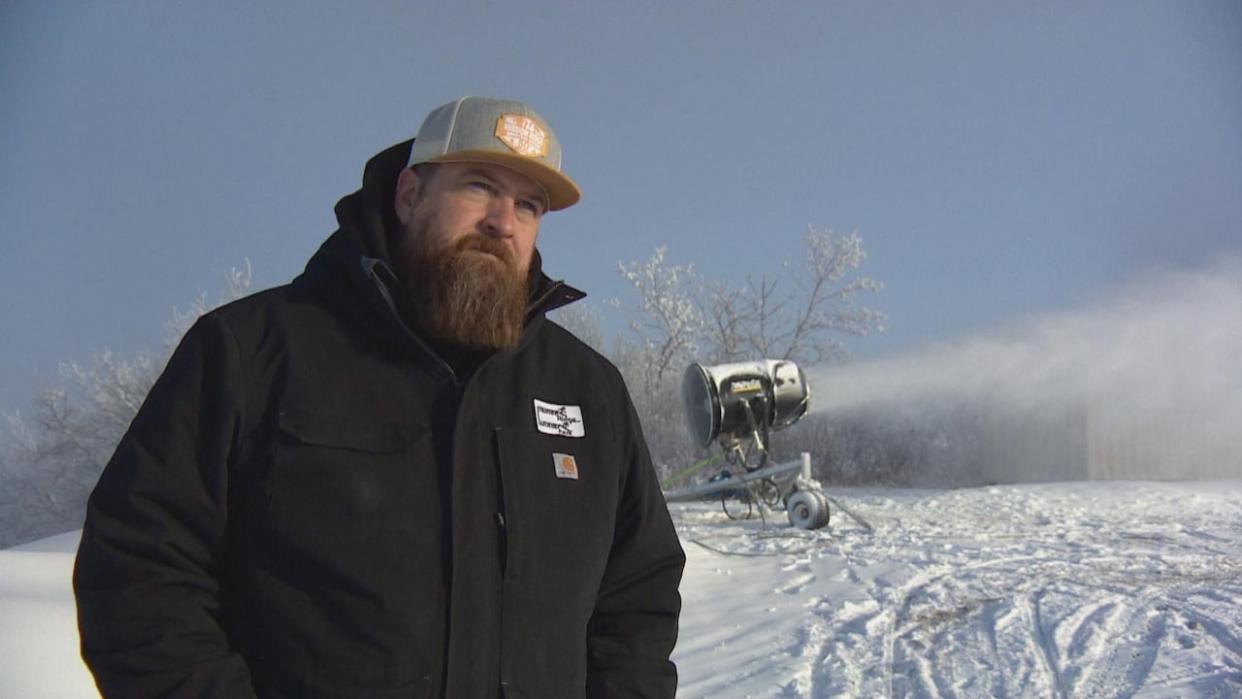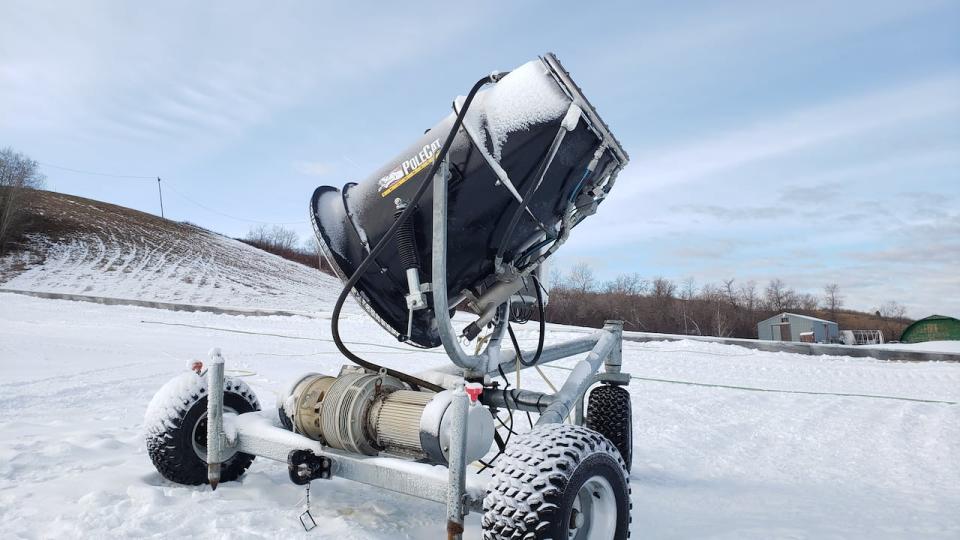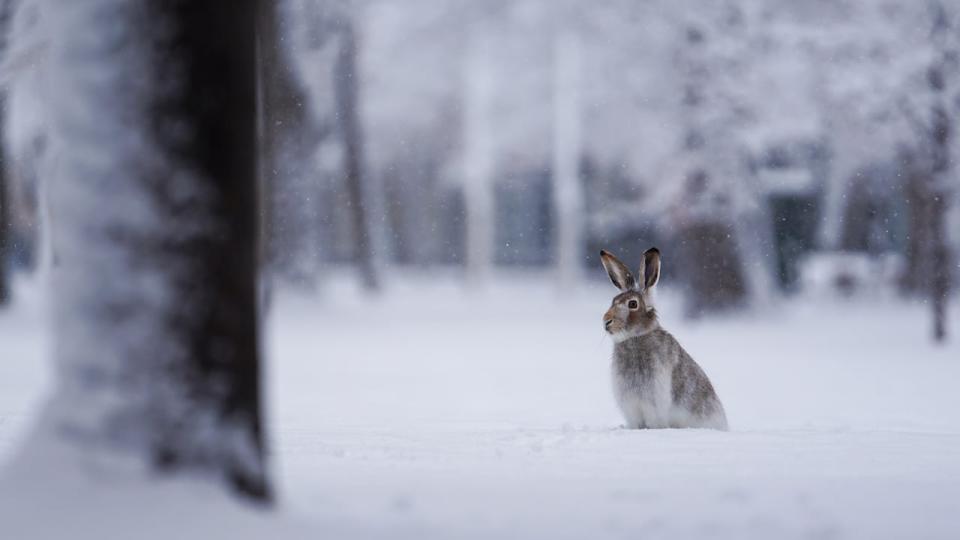Long-awaited Sask. snowfall celebrated by ski hill, but may do little to help farmers' crops

Those in both agriculture and recreation in Saskatchewan have been wishing for snow for the past few months. Now that snow has finally come to much of the province, some are breathing a sigh of relief, but for others, it may be a little too late.
Mission Ridge Winter Park — located about 75 kilometres east of Regina — is welcoming the snow with gusto. Anders Svenson, business manager at the park, said the cold temperatures mean ski hill operators can finally look forward to happy customers on the slopes.
"This is what we've been waiting for so far this season — real cold temperatures so that we can make a lot of snow really quickly. So we're really excited," Svenson said.
He said Mission Ridge makes 100 per cent of its own snow throughout the season. Warm temperatures can get in the way of how much they're able to produce. Ideal snow-making conditions usually require temperatures below –10 C. Svenson told CBC back in December that it takes about 400 hours of those conditions to get the park fully covered.
On Monday, he said the park was able to partially operate through the Christmas season, despite the dry weather. But the forecasted cold temperatures make him optimistic that the hill will be fully open for the rest of the winter season.
"Less natural snow just doesn't get people thinking of skiing. When everything around you is brown you don't really think about skiing. So we did see a bit [of] reduced numbers," Svenson said.

Between 10 and 15 million gallons of water have been loaded into snow guns like these to make snow at Mission Ridge this season, according to the park's business manager. (Ethan Williams/CBC)
While skiers prepare to enjoy the new powder, farmers like Ian McCreary still worry about the lasting effects of the summer's drought.
"This amount of snow is not going to make or break next year's crop. Most of southwest Saskatchewan and southeast Alberta is in perhaps one of the worst droughts of my lifetime," said McCreary, a grain and cattle farmer in the Bladworth area, 100 kilometres southeast of Saskatoon.
He said his land has about eight feet of mostly dry soil, which is consistent with what the International Panel on Climate Change predicted. It said droughts would get more severe and more frequent.
Farmers welcome any moisture
Cherilyn Jolly-Nagel, former president of the Canadian Wheat Growers Association and a farmer in Mossbank, about 70 kilometres southwest of Moose Jaw, said this is the eighth year in a row her farm is experiencing drought. She said more snow may help crop prospects.
"For the past seven years we have had low annual rainfall, so not enough water for us to grow our usual higher yielding crop, and we depend heavily through the wintertime on either good rain in the fall, good rain for the winter, good rain in the spring or some nice fluffy white snow,"said Jolly-Nagel.
But Jolly-Nagel said she is prepared if things remain dry.
"Every generation of farmer before me has experienced these drought conditions and there isn't a whole lot we can do about it," she said.
"I take some solace knowing that previous farmers and our families have gone through this, experienced it and gotten through it. I would say we have much better insurance programs available to us now. So I'm grateful for that."

Ian McCreary, a grain and cattle farmer in the Bladworth area, says Saskatchewan is experiencing one of the worst droughts in his lifetime. He says the latest snowfall will do little to help the next round of crops. (Chanss Lagaden/CBC)
McCreary said that while he believes the moisture brought on by the snowfall will not make a difference in next season's crop, any moisture is always welcome.
"We've never lost a crop in January. So you never give up on a crop in January. Three inches of rain over the summer at the right time will certainly help out and leave us with something," said McCreary.
"I think everybody is looking at their operation at this time of year to say what are those crops that are a little bit better under drought conditions than others. In our case, what are those crops that do a little better under extreme grasshopper pressure?"
McCreary said the best thing for farmers to do is to get seeds in the ground as early as possible to take advantage of any snowfall melt in the spring.
In the meantime, McCreary highlighted that these droughts are a result of greenhouse gas emissions. He said everyone needs to do their part to keep emissions down.
Drought trend continues
Environment and Climate Change Canada (ECCC) says conditions in south and central Saskatchewan have been generally dry in recent years, and noticeably drier between the 2022/23 fall/winter season and the 2023/24 fall/winter season.
"Some of this is from a trend that had already started forming in 2020," said Natalie Hazel, warning preparedness meteorologist for ECCC.
"The fact that it has continued to be this dry remains a concern."

Much of central and southern Saskatchewan finally got the snowfall it had been waiting for over the weekend of Jan. 6. (CBC / Radio-Canada)
Hazel said parts of central and swaths of southern Saskatchewan will have some precipitation in the next few days, but not "huge amounts of snow."
December was warm in the province, but now the soil has frozen as temperature have plummeted. That, Hazel said, means the soil is likely to remain dry.
"So even if we had liquid precipitation, it's not going to go anywhere. It's just going to sit on the top of the soil or become runoff and so not make it into the soil. And what we need is liquid into the soil."
Hazel said farmers will be watching what happens once the melt begins in the spring, and how much precipitation graces the Prairies.


